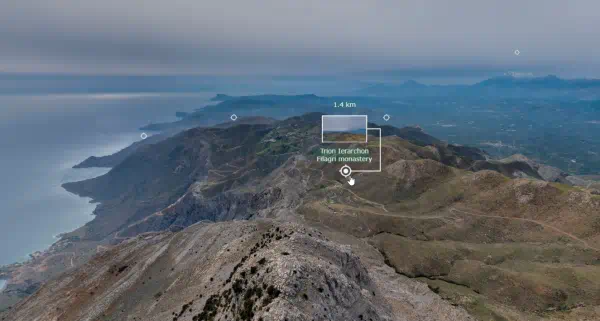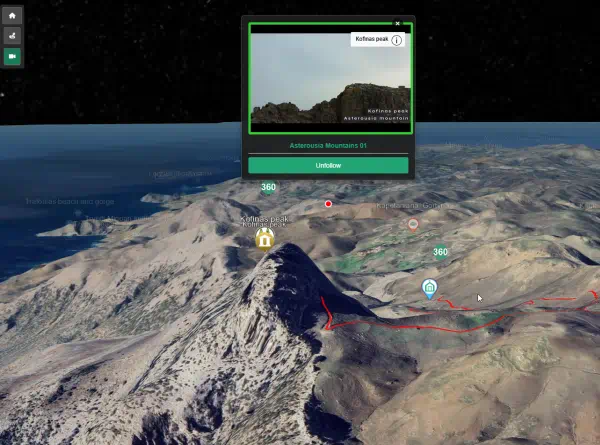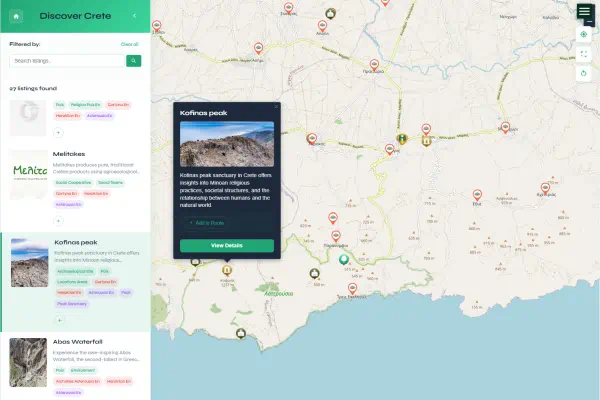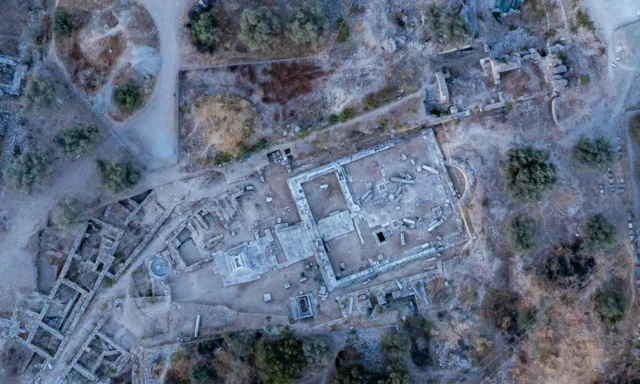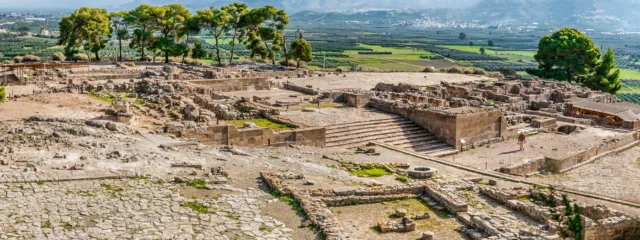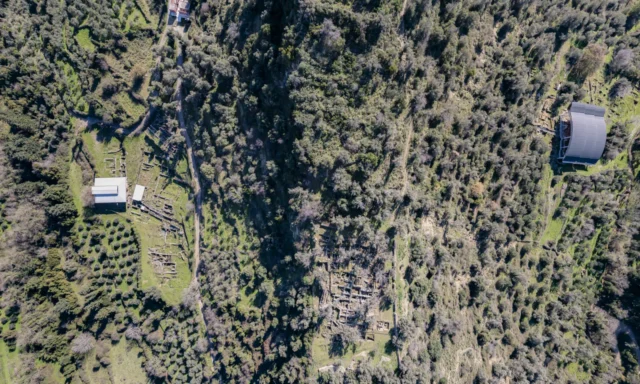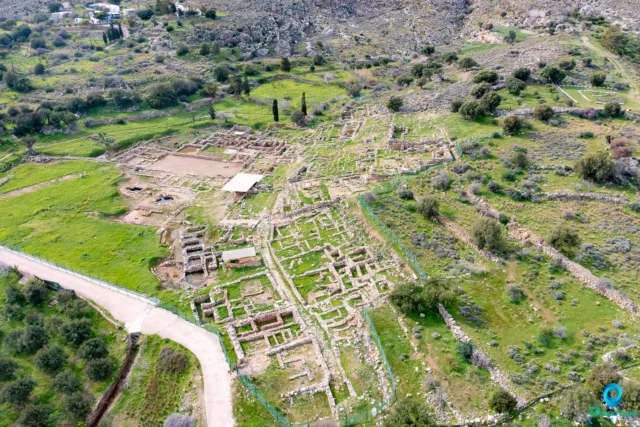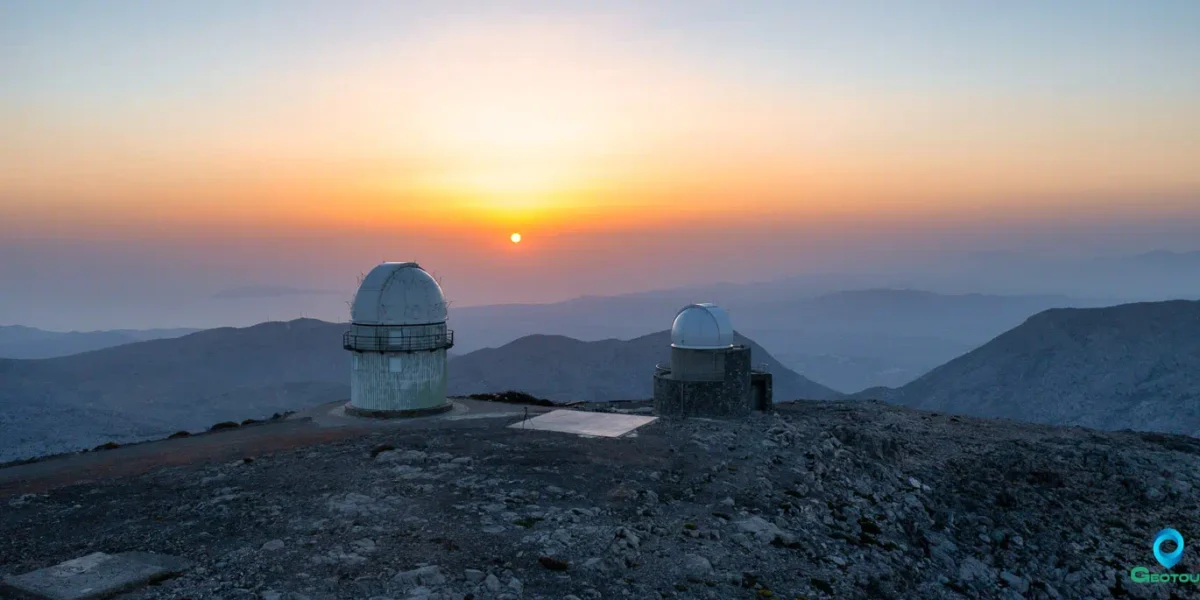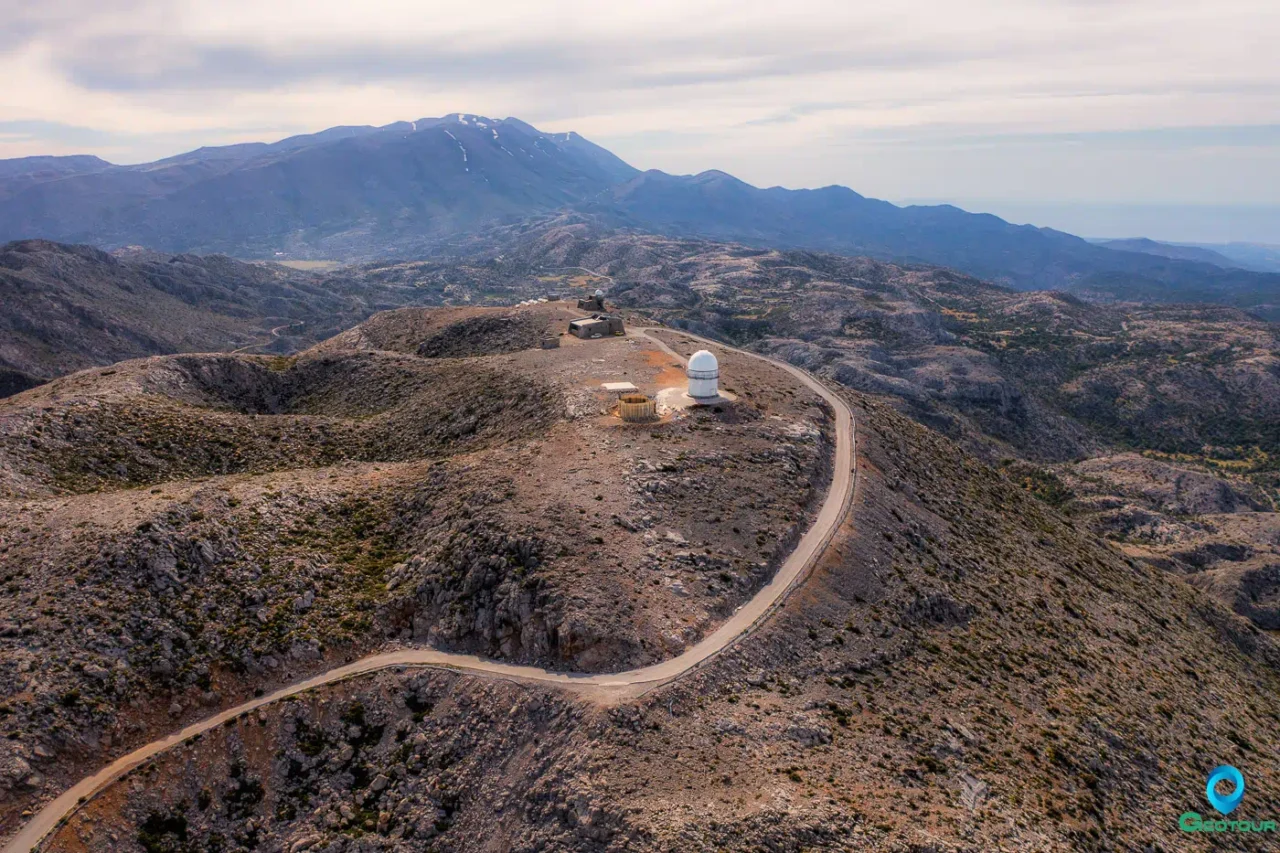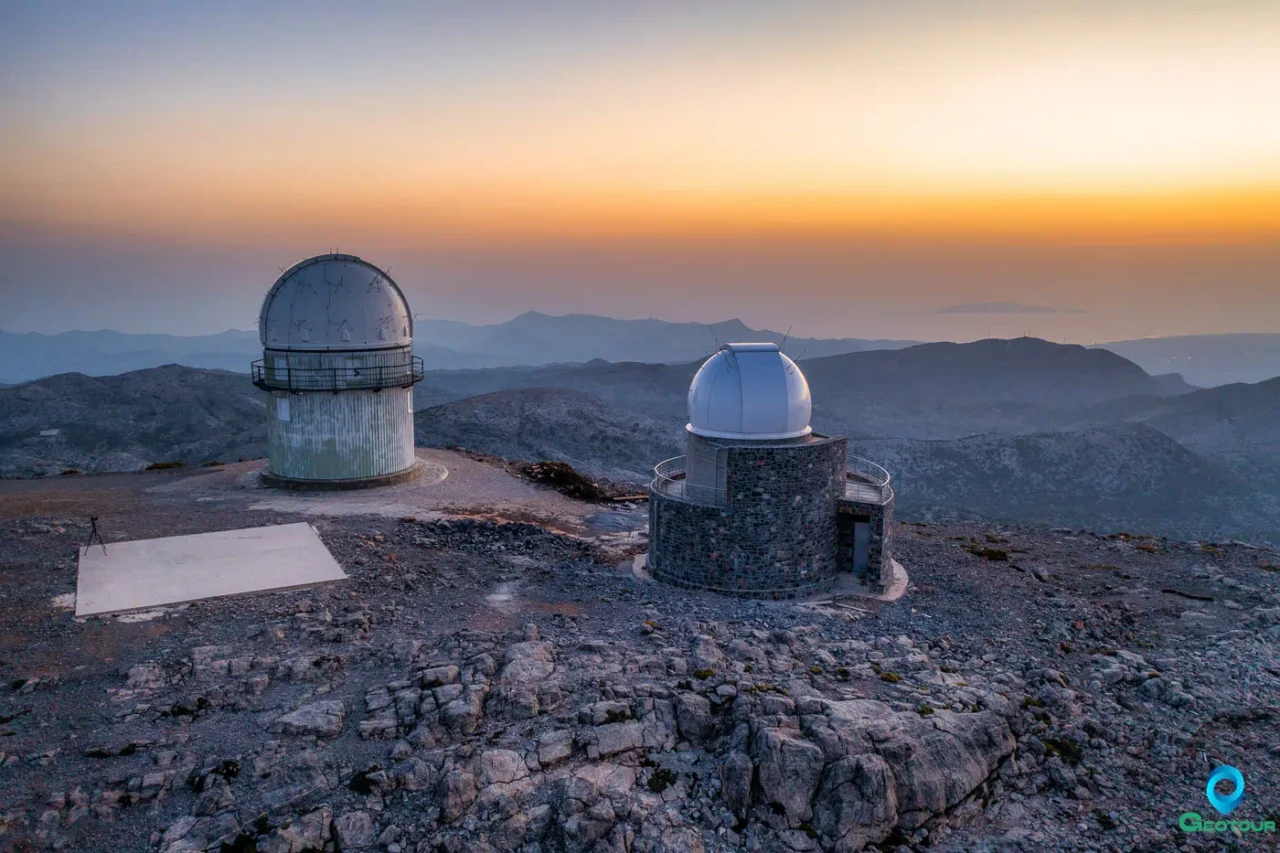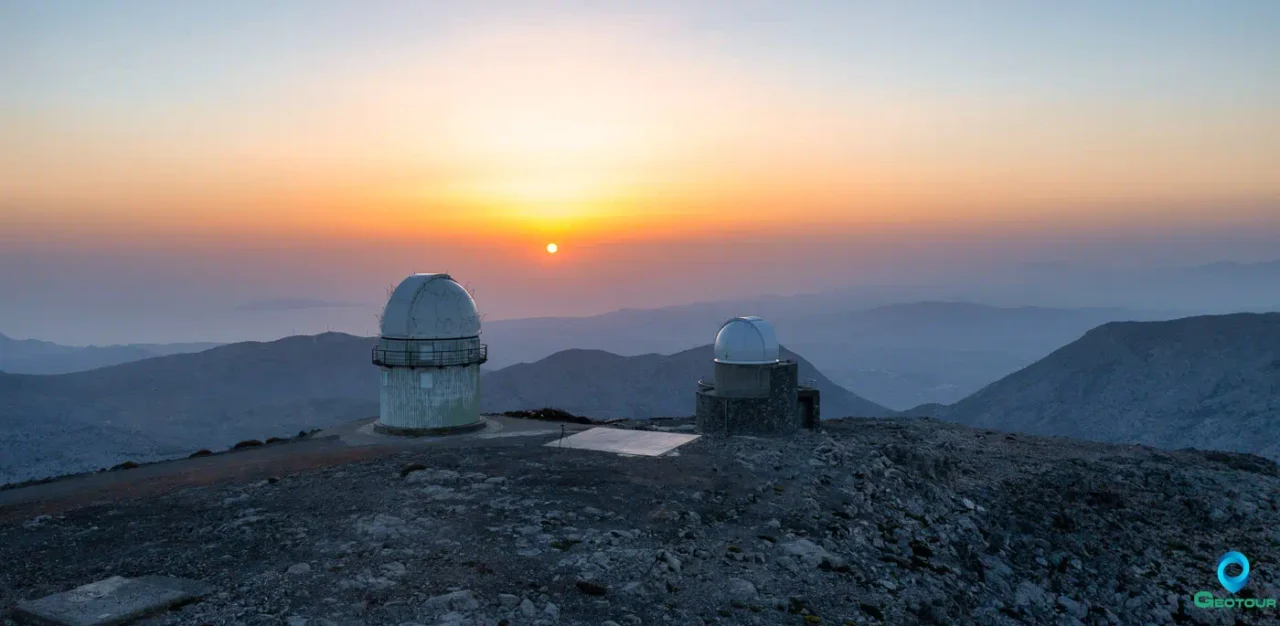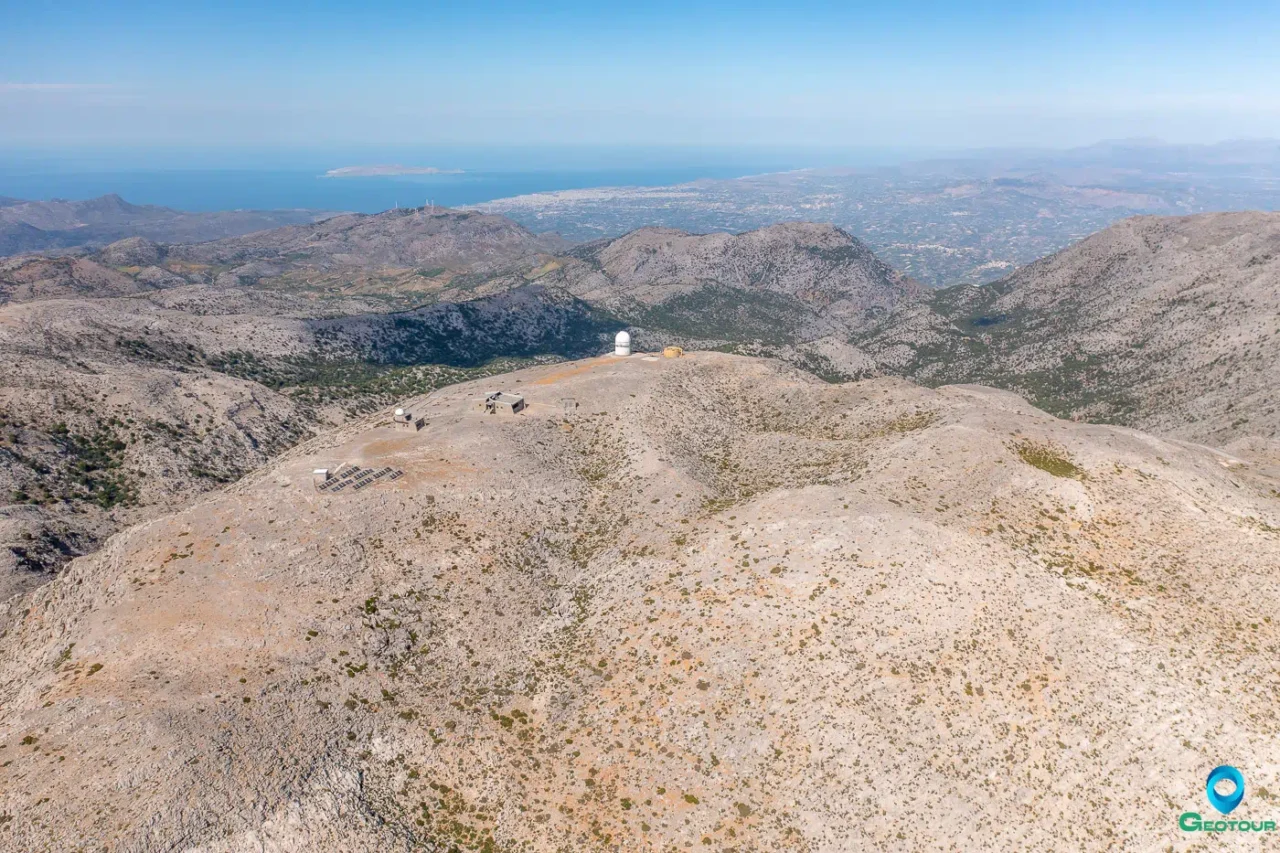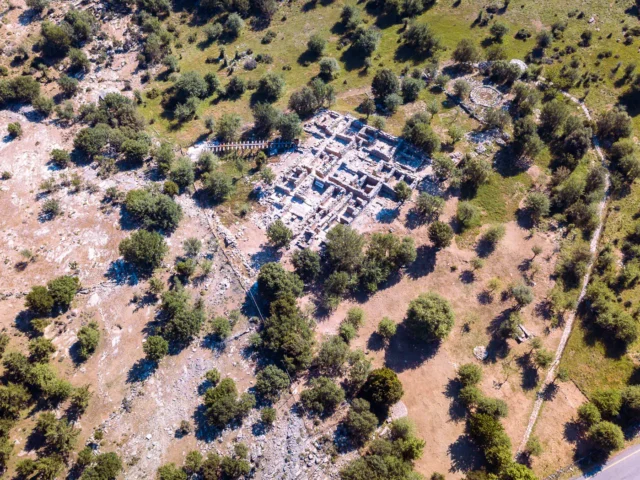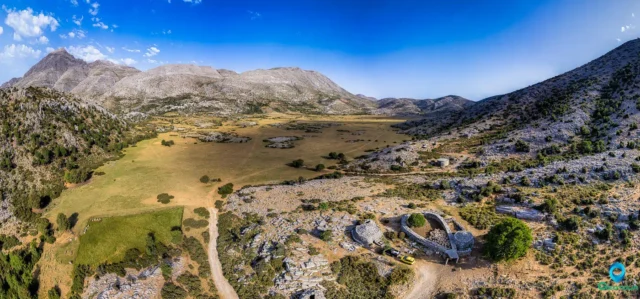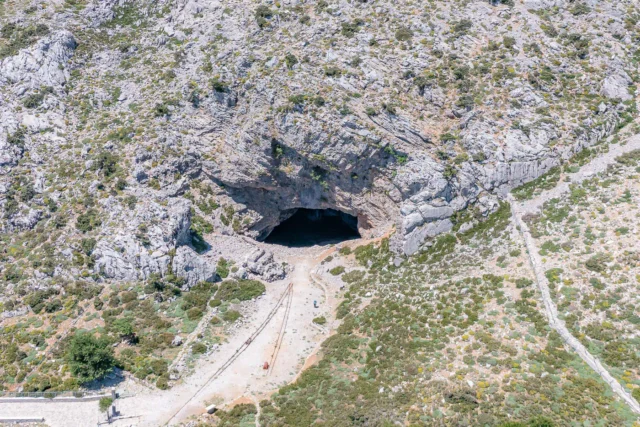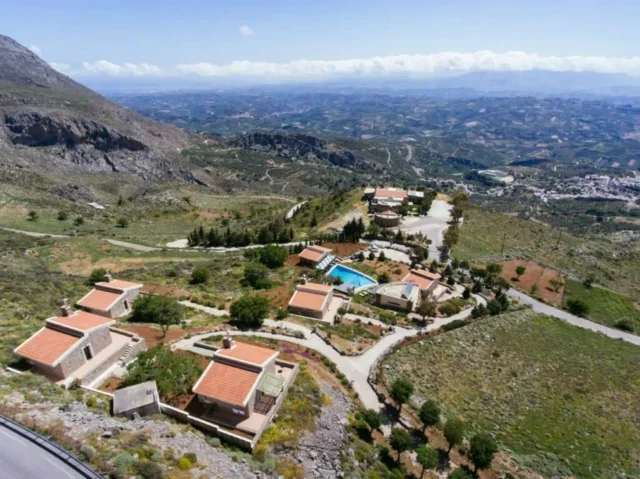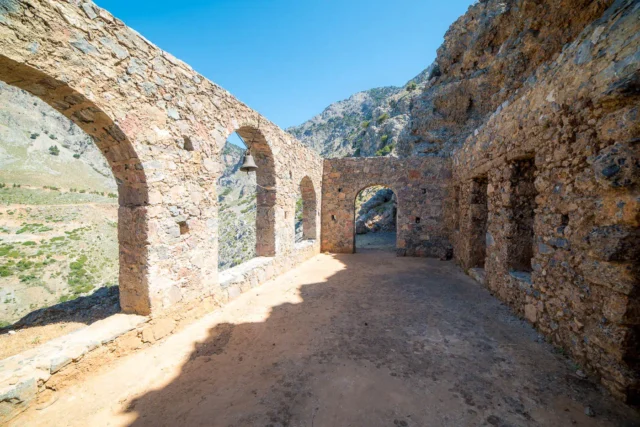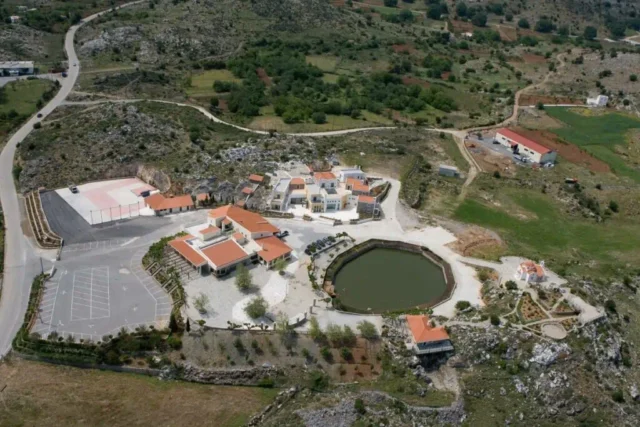Psiloritis, a UNESCO Global Geopark, is the highest mountain on Crete, with its highest summit, Timios Stavros, reaching an elevation of 2,456 meters. The range is composed primarily of limestone, exhibiting a classic karst topography with numerous caves, sinkholes, and plateaus. This geological composition contributes to its distinctive appearance and its importance as a natural laboratory for geological studies. Beyond Timios Stavros, other significant peaks within the Psiloritis range include Agathias, Koussakas, and Voulomenou, each contributing to the formidable character of the massif. These peaks collectively form a formidable barrier that influences local weather patterns and provides diverse microclimates, supporting a rich array of flora and fauna, some of which are endemic to Crete. The mountain’s slopes transition from olive groves and vineyards at lower altitudes to dense forests of oak and pine, eventually giving way to the alpine zone near the summits, characterized by sparse vegetation and exposed rock.
The Ascent to Skinakas
Reaching Skinakas involves traversing the rugged terrain of Psiloritis. The journey typically begins from the lower slopes, often from the historic village of Anogeia, situated approximately 20 kilometers away. The path to the summit is marked by a gradual increase in elevation, with the landscape transforming as one ascends. The initial stages are characterized by agricultural lands and scattered dwellings, giving way to more remote pastures and rocky outcrops. The air becomes crisper, and the sounds of human activity diminish, replaced by the natural sounds of the mountain. The road, initially constructed in 1985 to facilitate access to the observatory, winds its way through this changing environment, providing glimpses of the expansive views that await at higher altitudes. This ascent is not merely a physical climb but an immersion into the raw, untamed beauty of the Cretan landscape, revealing the mountain’s geological history and its enduring wildness.
The Summit Environment of Skinakas
The peak of Skinakas itself, standing at an elevation of 1,750 meters, presents a stark and impressive environment. The summit is predominantly rocky, with exposed limestone formations shaped by centuries of wind and weather. Despite the seemingly barren appearance, specialized alpine vegetation clings to crevices, adapted to the harsh conditions of high altitude, including strong winds, intense solar radiation, and significant temperature fluctuations. The atmosphere at Skinakas is notably clear, a critical factor for its scientific utility. This clarity, combined with minimal light pollution from distant urban centers, creates an optimal setting for astronomical observation. The ruggedness of the terrain underscores the powerful natural forces that have sculpted this part of Crete, offering a profound sense of isolation and grandeur.
The Skinakas Observatory: A Beacon of Scientific Inquiry
Perched on this commanding peak, the Skinakas Observatory stands as a testament to international scientific collaboration and a significant asset for astronomical research. Established in 1984 through a partnership between the University of Crete, the Foundation for Research and Technology – Hellas (FORTH), and the Max Planck Institute for Extraterrestrial Physics (Germany), the observatory has evolved into a vital center for astrophysics and astronomy. Its strategic location at 1,750 meters on Mount Ida provides excellent atmospheric conditions for high-quality astronomical observations in the Mediterranean region.
The observatory’s development began in 1985 with the construction of an access road and the first building, which housed a 0.3-meter reflector telescope from 1986. Official inauguration occurred on April 12, 1986. Further expansion saw the completion of a 200-square-meter guesthouse in 1988, both structures built from local stone, blending into the rocky surroundings. The observatory’s operational capacity significantly increased in 1987 with the installation of a CCD digital camera and photometric filters, enabling sophisticated astronomical observations.
Recognizing the potential of the site, a larger 1.3-meter telescope was installed in October 1995, becoming the largest operational telescope in Greece until 2007. This telescope, with its Ritchey-Chrétien optical system manufactured by Carl Zeiss AG, is housed in an entirely metallic building with an 8-meter diameter dome. The advanced support and guidance system, controlled by computers, ensures precise tracking of celestial objects.
In 2000, the observatory transitioned to sustainable energy, powered by an 11kW photovoltaic park, demonstrating a commitment to environmental responsibility. This system charges a substantial battery bank, providing clean energy for all observatory equipment, with diesel generators available for emergency backup. High-speed wireless internet connectivity links the observatory to the University of Crete and FORTH, facilitating real-time data transmission.
A third telescope, “Ganymede,” a 0.6-meter robotic telescope, was installed in 2006 in collaboration with the University of Tuebingen, Germany. Although its original dome was damaged by severe weather in 2013, a new, larger building with a 5.3-meter fast dome was completed in 2022, and the telescope resumed operations. In November 2024, this 0.6-meter telescope was replaced by a new 1.0-meter optical telescope, named “200+,” acquired through a donation from the “Greece 2021” Committee.
The Skinakas Observatory is highly productive in research, with data from its telescopes contributing to 293 publications in peer-reviewed journals by the end of 2024. It also supports the practical training of undergraduate physics students and postgraduate research programs at the University of Crete. Since 1996, “Open Nights” have been regularly organized during the summer months, allowing the public to visit the facilities and observe through the 1.3-meter telescope, fostering public engagement with astronomy. The observatory’s enduring operation is significantly supported by the Municipality of Anogeia and the local community, highlighting a strong bond between scientific endeavor and regional support.
The Panoramic Vista from Skinakas
One of the most compelling aspects of Skinakas peak, beyond its scientific importance, is the extraordinary panoramic view it affords. From this elevation, the landscape unfolds in a breathtaking display, stretching across vast distances. To the north, the azure expanse of the Cretan Sea dominates the horizon, often merging seamlessly with the sky on clear days. The coastline, with its intricate patterns and distant settlements, is visible in remarkable detail. Looking east and west, the rugged spine of Crete is laid bare, with other prominent peaks of the Psiloritis range and neighboring mountains visible, their forms softened by distance.
To the south, the fertile plains of Messara stretch out, a patchwork of agricultural fields and villages, contrasting sharply with the mountainous terrain. On exceptionally clear days, the outlines of distant islands in the Aegean Sea can be discerned, adding another layer to the expansive vista. The interplay of light and shadow across the varied topography throughout the day, from the first rays of dawn painting the peaks in golden hues to the dramatic sunsets that silhouette the mountains against a fiery sky, creates a constantly changing spectacle. This comprehensive view offers a profound appreciation for the island’s geographical diversity and its unique position in the Mediterranean.
Ecological and Cultural Importance
Beyond its scientific and scenic attributes, Skinakas and the broader Psiloritis massif hold significant ecological and cultural value. The mountain is a critical habitat for numerous species, including rare birds of prey and endemic plants, contributing to Crete’s rich biodiversity. Culturally, Psiloritis is deeply ingrained in Cretan identity, associated with ancient myths, historical struggles, and a resilient way of life. The traditional pastoral practices, the unique architecture of mountain villages like Anogeia, and the strong community ties reflect a profound connection to this formidable landscape. The presence of the observatory on Skinakas further integrates modern scientific pursuit with this ancient and vibrant cultural heritage, creating a unique synthesis of past and present.
The peak of Skinakas on Psiloritis mountain represents a remarkable convergence of natural grandeur, scientific innovation, and cultural significance. Its imposing elevation, rugged beauty, and the clarity of its atmosphere make it an ideal location for astronomical observation, exemplified by the Skinakas Observatory. The sweeping views from its summit provide an unparalleled perspective on the diverse landscapes of Crete, from its towering peaks to its coastal plains and the vast sea beyond. Skinakas stands as a prominent landmark, embodying both the enduring power of nature and the human quest for knowledge and understanding of the cosmos.
Key Points
- Altitude: The Skinakas Observatory is situated at an elevation of 1,750 meters (5,741 feet) on the peak of Skinakas.
- Location: Skinakas is located on Mount Ida (Psiloritis) in central Crete, Greece.
- Historical Significance:
- Observatory Establishment: The Skinakas Observatory was founded in 1984 through a collaboration between the University of Crete, FORTH, and the Max Planck Institute for Extraterrestrial Physics (Germany). Its official inauguration was on April 12, 1986.
- Telescope Milestones: It housed Greece’s largest operational telescope (1.3-meter) from 1995 to 2007. Significant upgrades include the installation of a 1.0-meter “200+” telescope in November 2024.
- Sustainable Operation: Since 2000, the observatory has been powered by a photovoltaic park, showcasing an early adoption of renewable energy for a scientific facility.
- Research Output: By the end of 2024, data from the observatory’s telescopes contributed to 293 publications in peer-reviewed journals and supported 15 doctoral dissertations, highlighting its significant contribution to astronomical research.
- Public Engagement: Since 1996, the observatory has hosted “Open Nights” for the public, fostering scientific literacy and community involvement.

